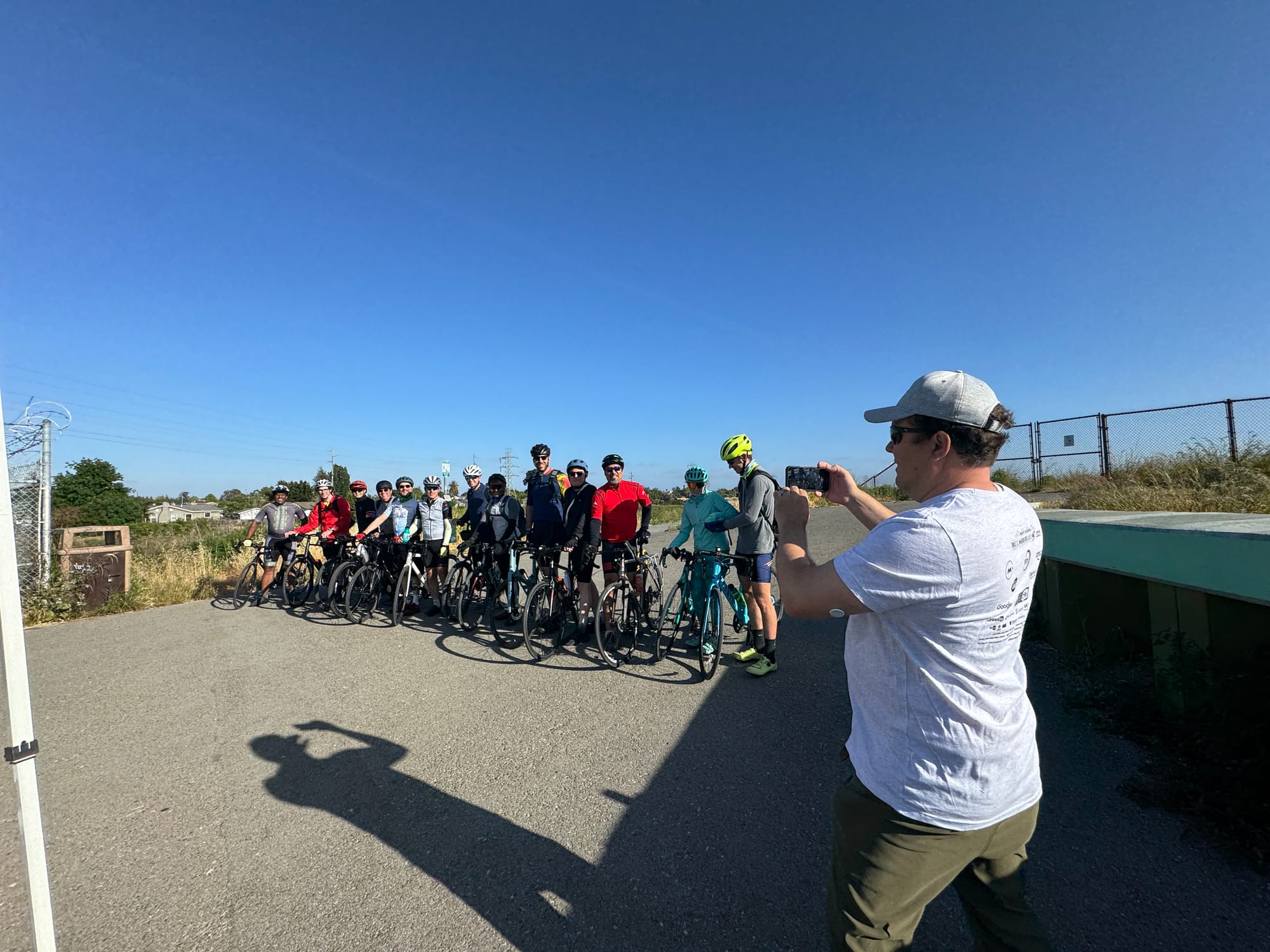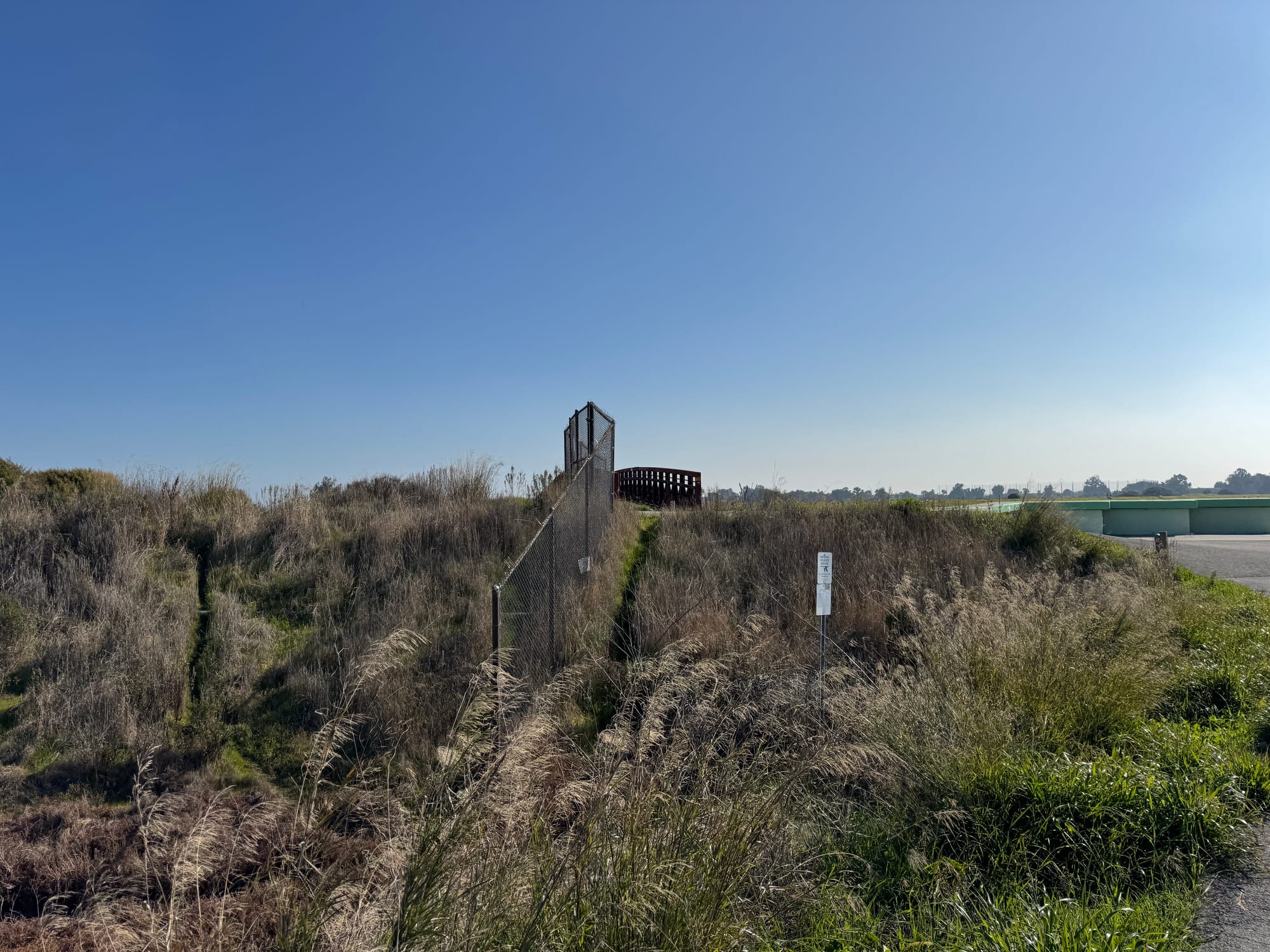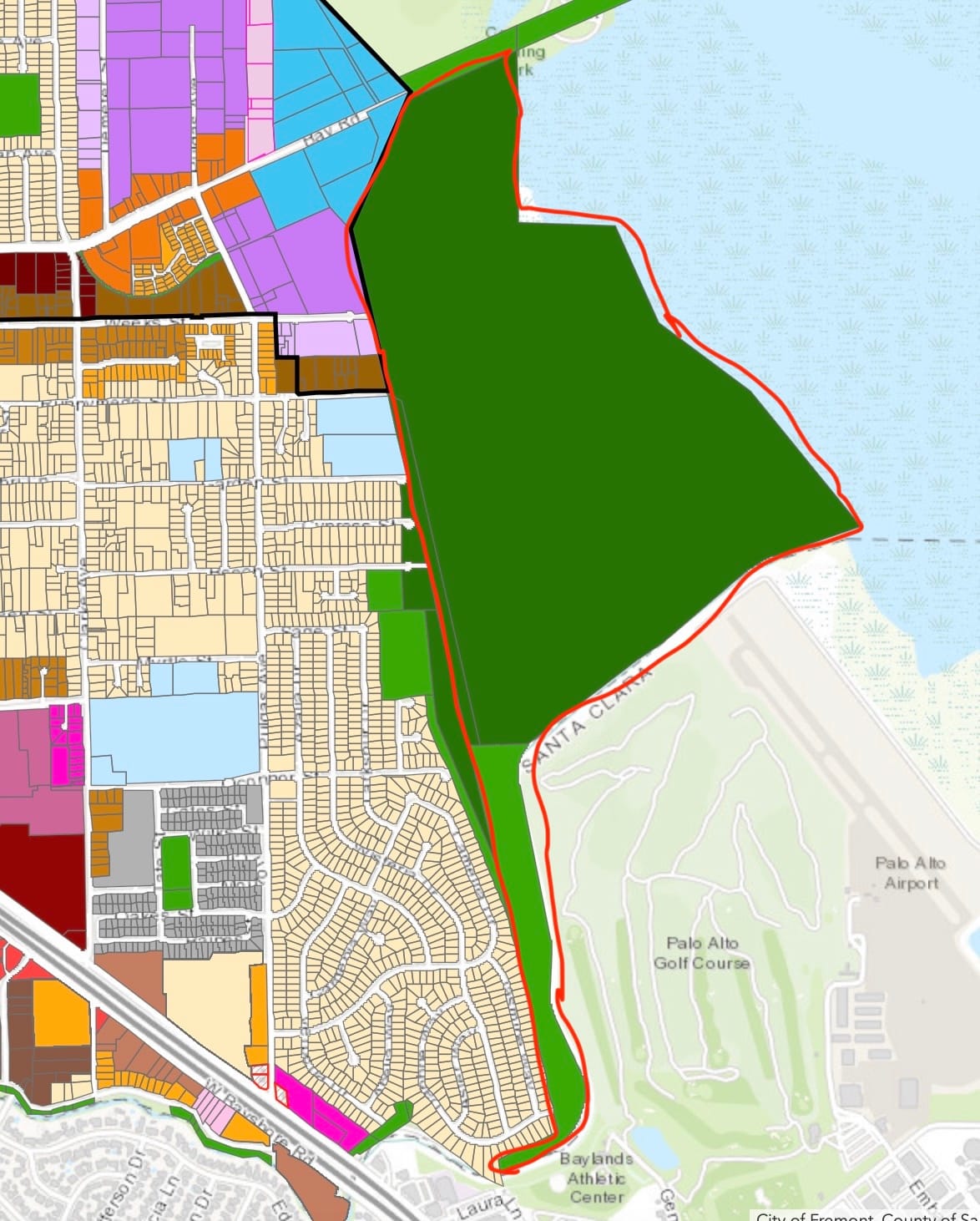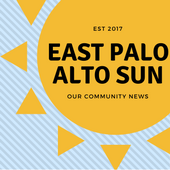Palo Alto owns 15% of East Palo Alto’s land—despite being in a different county. It’s time for East Palo Alto to reclaim this underused space and transform it into parks, trails, and public assets.
In the City of East Palo Alto which has 2.5 square miles, 15% of the land is owned by the City of Palo Alto. The City of Palo Alto owns at least 240 acres of land, or 0.375 square miles. Isn’t it odd that Palo Alto, which is in the County of Santa Clara, owns so much land in East Palo Alto, which is in the County of San Mateo?
Using the East Palo Alto Zoning ArcGIS, I captured and annotated this screenshot in red to outline the lands owned by Palo Alto (Fig 1, annotated in red). The largest lot is 216.31 acres, followed by 23.96 acres, and then smaller portions.
I think East Palo Alto should acquire this land from Palo Alto to address historical injustices, address the fact that no Palo Alto residents use this land, give East Palo Alto new opportunities for parks, and to reduce Palo Alto's maintenance costs.
Mark Dinan wrote more on this topic previously here:

Reason 1: Addressing historical injustices
East Palo Alto has faced a long history of systemic inequities—from redlining and chemical plants to the physical division of the city by Highway 101. It adds to this legacy of injustice that another city owns 15% of our limited land, particularly when that city lies in a different county.
This unusual arrangement is not just a bureaucratic quirk—it limits East Palo Alto’s ability to plan and build for its own future.
Reason 2: Palo Alto residents do not use this land

I volunteered at East Palo Alto’s Bike to Wherever Day on May 15, 2025, at a tent on the Bay Trail near the O’Connor Pump Station and Friendship Bridge. We counted over 100 cyclists and pedestrians throughout the day, and we talked to every single one.
None were from Palo Alto. None were going to Palo Alto.
This makes sense. Palo Alto residents already have access to nearby trails and parks like the Baylands Nature Preserve and Byxbee Park, which are more easily accessible from their side of the freeway. The land they own in East Palo Alto is largely ignored by the people who technically “own” it.
Reason 3: East Palo Alto can create more value with this land than Palo Alto can
East Palo Alto currently has a major parks shortage. According to the Parks Master Plan, the city has just 0.79 acres of parkland per 1,000 residents (p. 109), far below the goal of 3.0 acres (p. 110).
Acquiring these underutilized parcels and turning them into community parks would help close this gap. Many of the lands owned by Palo Alto are fenced off or unused, making them ripe for transformation into trails, green space, or public facilities.
Reason 4: Palo Alto is spending a lot of money maintaining this land
Palo Alto continues to maintain these parcels—spending money on weed mowing, invasive species removal, and restoration work. On Bike to Wherever Day, I saw four contractors removing invasive plants from a trail that’s gated off and not open to the public.
I estimate Palo Alto is spending $100,000 or more each year maintaining land that its residents don’t even access.
Worse, they don’t maintain it at the same level as their own parks. For example, Byxbee Park and other Baylands trails are mowed months earlier each year than the East Palo Alto parcels.
Opportunities if East Palo Alto Owns the Land
Parcel 1: Between Levee and Gardens Neighborhood
Palo Alto owns the lands directly to the south of the O’Connor Pump Station (Fig 2). This has been a useful land for the East Palo Alto Sanitary District over the past few years to stage construction equipment. Eventually, I see a lot of potential to use this land for new parks or city facilities for the benefit of the public.
Photos taken on 10/27/24 at GPS pin. First photo: Looking south from around 100’ south of the O’Connor Pump Station, the land underneath the levee trail and to the right are owned by the City of Palo Alto. The lands underneath the PG&E lines are not owned by Palo Alto nor East Palo Alto. Second photo: I panned my camera to the right by around 45 degrees to capture this photo from the same location. Here we see a large lot with a lot of potential as a future park.
Another potential use of the land further south between the levee and the Gardens neighborhood is as a trail. I spoke with a resident who was building dirt tracks for BMX biking. If East Palo Alto owned this land, then East Palo Alto could build new recreational facilities for its residents.

I have also appreciated the Canopy tree plantings on the southern section of this strip of land (GPS pin).
Parcel 2: Between Martin Luther King, Jr. Park and the Bay
Palo Alto owns this strip of land between MLK Jr. Park and the Bay. If the City of East Palo Alto owned this land, we could further expand the MLK Jr. Park.
Parcel 3: Marsh Land
The SFCJPA will need access to this land to build the South of Bay Road reach of the SAFER Bay Project. Why does Palo Alto own this land when the construction of the levee would impact and benefit East Palo Alto residents? Does Palo Alto want to be involved in fronting costs and staff time in a levee project that has zero benefit for Palo Alto residents?
Moreover, there is a large section of the trail that is gated off, and Palo Alto has been spending a lot of money hiring companies to maintain it. On the same day as Bike to Wherever Day, there were 4 professionals removing invasive plants and restoring native plants. It is a lot of money that Palo Alto is spending to restore a trail that is not open, and that they would not have incentive to open since Palo Alto residents would likely not use it. By acquiring the marsh land, East Palo Alto would be able to open this trail to the public.

Next Steps
I first brought this issue to the attention of East Palo Alto city staff in March 2025, and several council members are now aware.
It’s time for the City of East Palo Alto to act. By acquiring these underused and fenced-off lands, we can turn them into public assets—parks, trails, and facilities that benefit our community, not just sit idle under the ownership of another city.
Final Thoughts
Palo Alto may have annexed this land decades ago before East Palo Alto became incorporated as a city, but it’s clear today that East Palo Alto has the need, the vision, and the motivation to use it far better. The land is here, the residents are ready—and the time is now.
Let’s reclaim our city.

